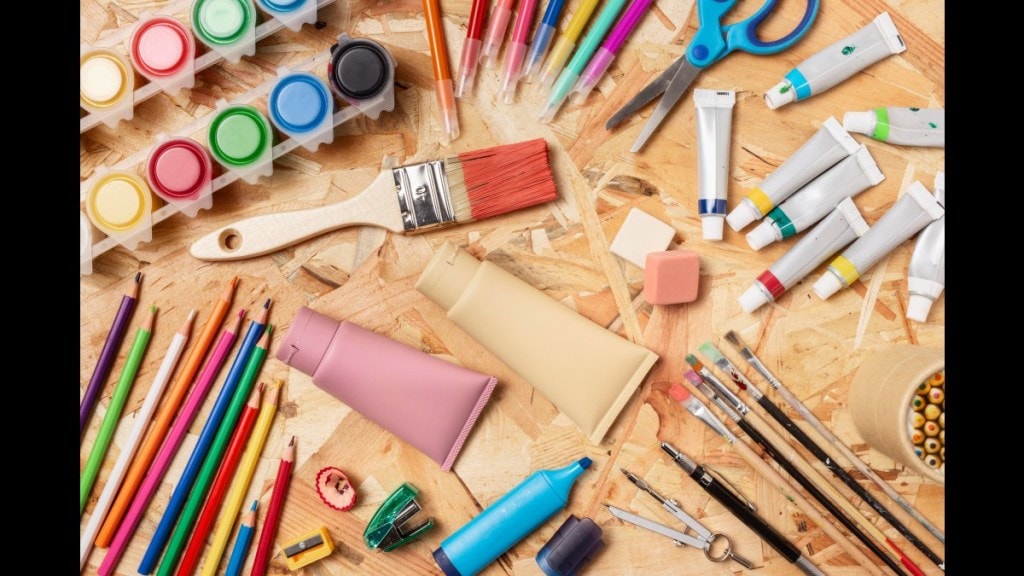By Divyanshu Solanki
In the world of arts and crafts, supporting an engaging learning environment is paramount. Achieving this goal, however, requires more than textbooks and lectures; it needs a multifaceted technique that integrates different types of expression. Among them, the inclusion of arts and crafts stands out as a powerful catalyst for creativity, critical thinking, and holistic improvement in undergraduate students.
Arts and crafts offer a dynamic platform for self-expression and exploration that transcends the boundaries of traditional academia. Through portraiture, sculpture, crafting and other artistic endeavours, students are encouraged to think outside the box and allow their imaginations to flourish. This innovative freedom, now not the easiest, complements their problem-solving skills, but also instills in them the experience of self-confidence in their abilities to handle complex challenging situations.
Additionally, arts and crafts function as vehicles for communication and emotional expression. In a world increasingly pressured by generation, the importance of human connection cannot be overstated. By engaging in inventive activities, students learn to communicate their thoughts and emotions in ways that transcend the limitations of language. Whether through visual arts, song or theatre, they expand empathy and know-how, connect with others and enrich their interpersonal skills.
Art and craft activities are crucial for children’s development, fostering creativity, problem-solving skills, and emotional expression. However, many working parents struggle to provide adequate attention to these activities due to their busy schedules. The inability to dedicate time to arts and crafts can deprive children of valuable learning experiences and hinder their overall development. Without parental involvement, children may miss out on opportunities to explore their creativity, develop fine motor skills, and express themselves artistically. This lack of attention can have long-term consequences on children’s cognitive and emotional development. Therefore, parents need to find ways to prioritize and incorporate arts and crafts into their children’s routines, whether through dedicated family time, enrolling them in extracurricular programs, or collaborating with schools to ensure that creative activities are integrated into the curriculum.
In addition to interpersonal relationships, arts and crafts also promote a deeper connection with oneself. The Advent process allows college students to tap into their innermost minds and emotions, promoting self-awareness and emotional intelligence. As they experiment with different media and techniques, they gain greater expertise in their strengths and weaknesses and specific opinions. This introspective path is important for non-public increase and improvement, equipping college students with the resilience and adaptability needed to handle countless lifestyle challenges.
In addition, arts and crafts offer a tangible illustration of acquiring knowledge, bridging the gap between abstract principles and applications in the actual world. Through palm stories, students benefit from a deeper understanding of educational topics, from arithmetic and science to records and literature. For example, building a version of a historical landmark that isn’t the most skillful now not only reinforces understanding of what’s next, but also cultivates spatial awareness and engineering skills. Similarly, creating artwork stimulated by science standards allows college students to explore complicated concepts in tangible and meaningful ways.
Furthermore, incorporating arts and crafts into education promotes inclusivity and diversity. Celebrating distinctive cultural traditions and inventive styles, students learn to recognize the richness of human history and the value of multiple perspectives. This fosters a sense of belonging and mutual respect and develops a wider learning environment where every voice is heard and valued.
Finally, the function of artwork and craft in education cannot be overstated. Beyond mere aesthetics, it serves as an effective device for promoting creativity, communication and critical thinking in students. By incorporating artistic sports into the curriculum, educators can create a more engaging and enriching mastery environment that allows college students to be triumphant not only academically, but also me and socially. As we strive to prepare the next technology for an ever-changing international society, let us not forget now the transformative electricity of artwork and craft in shaping minds and hearts.
The author is the founder and CEO at Inknibs.

